
Printing note: This design was created to be 8.5″ x 14″ and the design pdf will print best on legal size paper.
Wild Ones Meet the Designers Webinar
Landscaping for Resilience with Texas Native Plants

Overview
When designing a home landscape, the first things we consider are the sun exposure and breezes which influence the micro-climates of the property. This property faces south, and the back garden is to the north which also affects micro-climates. In addition, we consider where water will flow from the roof, adjacent properties, and the natural slope of the property. We created detention rain gardens and swales to direct water from the downspouts to the gardens and away from the house. Then we decide on what we want the spine (paths and gathering space and major trees) of the landscape to be. In other words, if all the small planting were dormant, what would still be visible and where do we need shade from trees? We pay great attention to paths and outdoor gathering spaces and for this house, you can see that we have many, including the front and back porch, a fire pit gathering zone, and a corner refuge patio and arbor.
Because this house is in the north Dallas/Ft. Worth area we reference plants that are native to the Blackland Prairie and the Cross Timbers ecoregions. We are also imagining that this property might have clay as part of the soil profile. Because of the front sunny part of the property, we designed this area as a miniature prairie garden where we will add some sandy loam to the soil to help the drought tolerant prairie plants. Because the property slopes to the north we are proposing planted swales also amended with sandy loam to soak up and direct downspout water to the north and into detention rain gardens. We always encourage homeowners to consider small side gardens as these are important for bedroom views and privacy. You can see that for this garden we are proposing a wall and small fountain for a nice sound and view from one of the rooms.
The north garden is more of a woodland garden surrounding a small native lawn. We have used species that can manage additional water in and around the rain gardens. We have designed destinations deep in the landscape away from the house so a homeowner can feel immersed in the beauty of the native plant palette.
Phasing
Phasing Plan A
- All Site Grading, Hardscape Elements & Tree Planting
- All Irrigation & Remaining Planting
Phasing Plan B
- Front Hardscape, Planting & Irrigation
- Back Patio, Grading, Irrigation & Planting 3: Corner Patio, Banco & Arbor
- Fire Pit
- Side Wall Fountain







Features

Prairie Pollinator Garden

Note: Download the full design for more details, plant lists and keys.
The Prairie Pollinator Garden was designed with biodiversity and beauty in mind. Each plant was chosen for its ability to thrive in prairie conditions, attract local pollinators, and provide year-round interest. From vibrant flowers to structural grasses, this garden showcases how native plants can support a healthy ecosystem while creating a visually stunning landscape.
Prairie Pollinator Garden Plant List
Trees
- Desert willow (Chilopsis linearis ‘Bubba’): A drought-tolerant tree with fragrant purple flowers that attract hummingbirds and other pollinators.
- Yaupon holly (Ilex vomitoria): A hardy evergreen shrub/tree providing year-round structure and berries for birds.
- Cedar elm (Ulmus crassifolia): A native shade tree that supports local wildlife and adds height to the landscape.
Shrubs & Perennials
- White mistflower (Ageratina havanensis): A compact shrub with white flowers that attract butterflies and bees.
- Indigo bush (Amorpha fruticosa): A nitrogen-fixing shrub with purple flowers, ideal for supporting native insects.
- Flame acanthus (Anisacanthus quadrifidus var. wrightii): A vibrant shrub with tubular red flowers, perfect for hummingbirds.
- Fall aster (Aster oblongifolius): A low-maintenance perennial providing late-season blooms for pollinators.
- Red yucca (Hesperaloe parviflora): A structural succulent with coral flower spikes that attract hummingbirds.
- Dwarf yaupon holly (Ilex vomitoria ‘Dwarf’): A smaller version of yaupon holly with dense, evergreen foliage.
- Texas gayfeather (Liatris punctata var. mucronata): A striking perennial with tall purple flower spikes loved by pollinators.
- Agarita (Mahonia trifoliolata): A thorny shrub offering early-season nectar and berries for wildlife.
- Autumn sage (Salvia greggii): A fragrant perennial with colorful flowers in shades of red, pink, or purple.
- Mountain sage (Salvia regla): A showy shrub with large orange-red flowers, a favorite of hummingbirds.
- Pale-leaf yucca (Yucca pallida): A sculptural plant with silvery-blue foliage and tall flowering spikes.
Grasses
- Blue grama (Bouteloua gracilis): A low-growing native grass with attractive seed heads that sway in the breeze.
- Mexican feathergrass (Nassella tenuissima): A fine-textured grass adding movement and softness to the garden.
- Little bluestem (Schizachyrium scoparium): A versatile native grass with seasonal color and wildlife value.
Woodland Rain Garden

Woodland Rain Garden (East) Plant List
Trees
- Texas redbud (Cercis canadensis var. texensis): A small deciduous tree with pink spring flowers that provide early-season nectar for pollinators.
- Wax myrtle (Morella cerifera): A versatile evergreen shrub/tree with aromatic foliage, offering shelter and berries for birds.
- Chinkapin oak (Quercus muehlenbergii): A native oak that provides food and habitat for a wide variety of wildlife.
- Cedar elm (Ulmus crassifolia): A durable native tree that supports local pollinators and provides shade.
Shrubs & Perennials
- White mistflower (Ageratina havanensis): A compact shrub with clusters of white blooms that attract butterflies and bees.
- Indigo bush (Amorpha fruticosa): A nitrogen-fixing shrub with purple flowers, perfect for supporting native pollinators.
- Fall aster (Aster oblongifolius): A late-season perennial providing essential nectar for pollinators in autumn.
- Coralberry (Symphoricarpos orbiculatus): A low-growing shrub with clusters of pink berries that provide winter interest and food for birds.
Grasses
- Inland sea oats (Chasmanthium latifolium): A graceful, shade-tolerant grass with distinctive seed heads, adding movement and texture to the garden.
- Little bluestem (Schizachyrium scoparium): A colorful native grass with seasonal interest and wildlife value.
Native Lawn

The Native Lawn demonstrates a sustainable approach to landscaping by replacing conventional turf grass with buffalograss (Bouteloua dactyloides), a warm-season, dense native grass that thrives in full sun and minimal care. Unlike traditional lawn grasses, buffalograss is drought-tolerant, requires little to no mowing, and eliminates the need for chemical fertilizers and pesticides. This makes it an eco-friendly choice that conserves water and reduces environmental impact.
The backyard is framed by a mix of native shrubs, perennials, and ornamental grasses that add color, texture, and wildlife value. Shurbs like American beautyberry and Turk’s cap offer pops of color and vital resources for wildlife while native vines like Carolina jessamine and Texas wisteria add vertical interest.
Backyard Plant List
Trees
- Bigtooth maple (Acer grandidentatum): A small, deciduous tree with striking fall colors, perfect for creating shade and seasonal interest.
- Texas redbud (Cercis canadensis var. texensis): A native tree known for its early spring pink blooms that attract pollinators.
- Mexican plum (Prunus mexicana): A small tree with fragrant spring flowers and fruit that supports wildlife.
- Chinkapin oak (Quercus muehlenbergii): A native oak providing food and habitat for a variety of wildlife.
- Rusty blackhaw viburnum (Viburnum rufidulum): A multi-season tree with spring flowers, fall color, and berries for birds.
Shrubs & Perennials
- White mistflower (Ageratina havanensis): A butterfly magnet with clusters of white blooms.
- American beautyberry (Callicarpa americana): A native shrub with vibrant purple berries that attract birds.
- Red yucca (Hesperaloe parviflora): A drought-tolerant perennial with coral flower spikes that hummingbirds love.
- Dwarf yaupon holly (Ilex vomitoria ‘Dwarf’): A compact evergreen shrub offering year-round interest.
- Texas lantana (Lantana urticoides): A low-maintenance plant with colorful blooms that pollinators adore.
- Texas sage (Leucophyllum frutescens): A hardy shrub with silvery foliage and purple blooms after rain.
- Turk’s cap (Malvaviscus arboreus var. drummondii): A perennial with bright red flowers that attract hummingbirds.
- Fragrant sumac (Rhus aromatica): A low-growing shrub with aromatic foliage and vibrant fall color.
- Cedar sage (Salvia roemeriana): A shade-loving perennial with red flowers that attract pollinators.
- Coralberry (Symphoricarpos orbiculatus): A low-growing shrub with clusters of pink berries for wildlife.
Grasses
- Buffalograss (Bouteloua dactyloides): A warm-season native grass that forms a dense, low-maintenance lawn.
- Texas sedge (Carex texensis): A versatile native grass for shady areas, perfect for erosion control.
- Inland sea oats (Chasmanthium latifolium): A graceful grass with distinctive seed heads, ideal for shade or partial sun.
Vines
- Texas wisteria (Wisteria frutescens): A native alternative to invasive wisteria, with beautiful lavender blooms.
- Carolina jessamine (Gelsemium sempervirens): A twining evergreen vine with fragrant yellow flowers in spring.
Evergreen Buffer
The Evergreen Buffer is designed to create a year-round privacy screen with a mix of native trees, shrubs, grasses. Key features include the Lacey oak, with its unique blue-green foliage, and agarita, an evergreen shrub that offers vibrant yellow flowers in spring and berries for birds. Red yucca and fall aster add seasonal color and attract pollinators, while crossvine provides vertical interest with its showy orange blooms. The use of Mexican feathergrass softens the overall design with its flowing texture. By blending evergreen structure with vibrant seasonal interest, the Evergreen Buffer delivers functionality and ecological value.
Evergreen Buffer Plant List
Trees
- Texas redbud (Cercis canadensis var. texensis): A small deciduous tree with showy pink blossoms that provide early-season nectar for pollinators.
- Desert willow ‘Bubba’ (Chilopsis linearis ‘Bubba’): A drought-tolerant tree with trumpet-shaped flowers that attract hummingbirds.
- Lacey oak (Quercus laceyi): A medium-sized native oak with attractive blue-green foliage and wildlife value.
Shrubs & Perennials
- White mistflower (Ageratina havanensis): A compact shrub with clusters of white blooms, providing nectar for butterflies and bees.
- Fall aster (Aster oblongifolius): A perennial with purple blooms that offer late-season nectar for pollinators.
- Red yucca (Hesperaloe parviflora): A striking, drought-tolerant plant with tall red flower spikes loved by hummingbirds.
- Agarita (Mahonia trifoliolata): A hardy evergreen shrub with spiny leaves, fragrant yellow flowers, and berries for wildlife.
Grasses
- Mexican feathergrass (Nassella tenuissima): A fine-textured grass with graceful, flowing seed heads that add softness to the landscape.

Vines
- Crossvine (Bignonia capreolata): A vigorous climbing vine with orange trumpet-shaped flowers, providing color and support for pollinators.
Note: Download the full design for more details, plant lists and keys.
Plant List
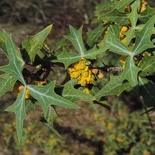
Agarita(Mahonia trifoliolata)

American Beautyberry(Callicarpa americana)
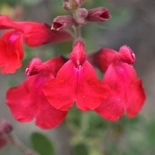
Autumn Sage(Salvia greggii)

Bigtooth Maple(Acer grandidentatum)

Blue Grama(Bouteloua gracilis)
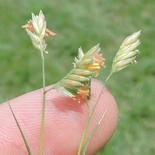
Buffalograss(Bouteloua dactyloides)
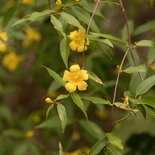
Carolina Jessamine(Gelsemium sempervirens)

Cedar Elm(Ulmus crassifolia)

Cedar Sage(Salvia roemeriana)
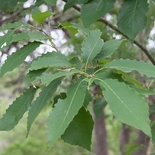
Chinkapin Oak(Quercus muehlenbergii)
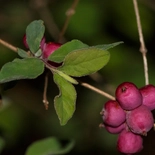
Coralberry(Symphoricarpos orbiculatus)

Cross Vine(Bignonia capreolata)

Desert Willow(Chilopsis linearis)
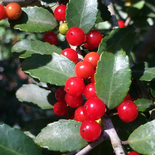
Dwarf Yaupon Holly(Ilex vomitoria)
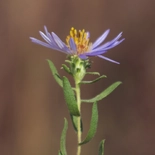
Fall Aster(Aster oblongifolius)
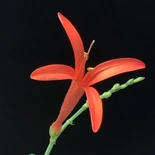
Flame Acanthus(Anisacanthus quadrifidus var. wrightii)
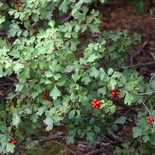
Fragrant Sumac(Rhus aromatica)

Gayfeather(Liatris pycnostachya)
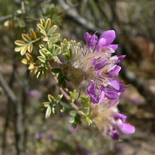
Indigo Bush(Dalea pulchra)

Inland Sea Oats(Chasmanthium latifolium)

Lacey Oak(Quercus laceyi)
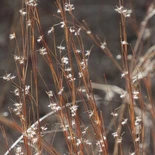
Little bluestem(Schizachyrium scoparium)
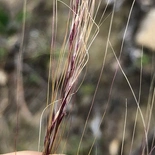
Mexican Feathergrass(Nassella tenuissima)

Mexican Plum(Prunus mexicana)

Mountain Sage(Salvia regla)

Pale Leaf Yucca(Yucca Pallida)

Red Yucca(Hesperaloe parviflora)
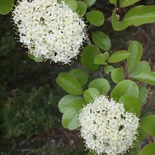
Rusty Blackhaw Viburnum(Viburnum rufidulum)
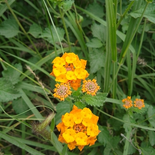
Texas Lantana(Lantana urticoides)

Texas Redbud(Cercis canadensis var. texensis)
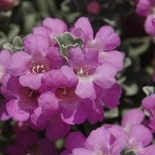
Texas Sage(Leucophyllum frutescens)

Texas Sedge(Carex texensis)

Texas Wisteria(Wisteria frutescens)
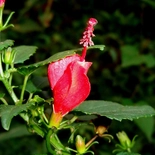
Turk's Cap(Malvaviscus arboreus)
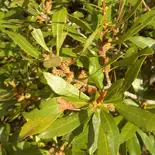
Wax Myrtle(Morella cerifera)
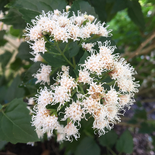
White Mist Flower(Ageratina havanensis)

Yaupon Holly(Ilex vomitoria)

The Native Plant Society of Texas (NPSOT) has been an integral partner in the development of this design, bringing their deep knowledge of Texas native plants and habitats to the project. With a mission to promote conservation, research, and the utilization of native plants, NPSOT’s expertise and network of over 4,000 members and volunteers across 34 chapters have greatly enriched the process. Their collaboration ensures this design not only reflects the unique ecological characteristics of Texas but also serves as a practical tool for conservation, education, and community engagement. This partnership highlights the power of working together to create meaningful landscapes that support biodiversity and inspire sustainable practices.
ABOUT THE DESIGNER

Christine Ten Eyck, PLA, FASLA, is a celebrated landscape architect and the founder of Ten Eyck Landscape Architects, with offices in Austin, Texas, and formerly Phoenix, Arizona. Since 1997, Christy has led her team in designing meaningful and restorative outdoor spaces that connect people with nature. Her work spans civic, institutional, commercial, and residential projects, with a deep focus on creating resilient, place-based landscapes that reflect the unique beauty of the Southwest and beyond.
With a passion for ecological well-being and human connection, Christy has been a leader in integrating native plant communities, water-harvesting techniques, and locally sourced materials into her designs. Her projects, including the world-renowned University of Texas at El Paso Campus Transformation, have garnered numerous accolades, such as the first-ever Sustainable SITES Initiative certification, for their innovation in sustainability, water conservation, and community engagement.
As a Fellow of the American Society of Landscape Architects (ASLA), Christy’s work has been recognized for its balance of environmental sensitivity and design artistry. She lectures widely on sustainable landscape practices and has been featured in prestigious publications including The New York Times, Wall Street Journal, and Landscape Architecture Magazine.
About Wild Ones
Wild Ones (a 501(c)(3) nonprofit organization) is a knowledgeable, hands-on, and supportive community focused on native plants and the ecosystem that depends on them. We provide resources and online learning opportunities with respected experts like Wild Ones Honorary Directors Doug Tallamy, Neil Diboll, and Larry Weaner, publishing an award-winning journal, and awarding Lorrie Otto Seeds for Education Program grants to engage youth in caring for native gardens.
Wild Ones depends on membership dues, donations and gifts from individuals like you to carry out our mission of connecting people and native plants for a healthy planet.
Looking for more native gardening inspiration? Take a peek at what our members are growing!
